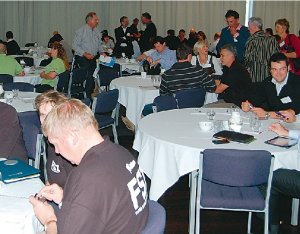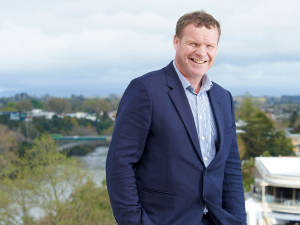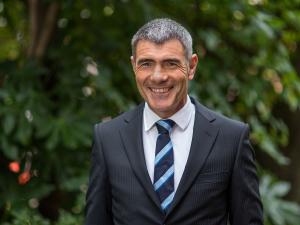He warned the conference’s 250 farmers to stay on top of their game or get drowned in policy.
And he urged the industry to work closely with regional councils and other stakeholders on formulating policy.
Fighting costly battles with regional councils should be avoided, Hutchings warned, citing the Waikato Regional Council’s Variation 6 water allocation policy, finalised in the Environment Court after a long struggle between the council and farmers.
He says WRC’s first proposal allocated all but 3.6% of the water flow to Mighty River Power, risking the region’s dairy sector. After “engaging vigorously” the industry secured an extra 1.4% water flow for farmers.
No good spirit came out of WRC’s style of Variation 6 policy making, he says: “It left blood on the floor and was a costly exercise for everyone.”
Hutchings says the Land and Water Forum (LAWF), an umbrella body for formulating water policy, is a good example of collaboration between stakeholders. “We have to argue strongly in LAWF. We have to win our respected seat at the table but we also have to play our part.”
LAWF is expected to release results of its second phase in three months which Hutchings says will be far reaching.
“There will be clear guidelines set for minimum standards that everyone has to work for. LAWF is a good example of collaboration whereby we avoid debating on the front pages of newspapers.”
Hutchings warns competition for water will be fierce and dairy farmers’ efforts to protect water quality will remain under scrutiny. Farmers are doing their bit: Fonterra’s Dairying and Clean Streams Accord has enabled 78% of streams and waterways to be fenced.
But he concedes effluent management is the industry’s “Achilles heel”, though the co-op is improving effluent management through its ‘every farm every year’ initiative.
Hutchings says significant non-compliance has dropped from 17% last year to 11% this year. The co-op now has 14 sustainable dairy advisers working with farmers.

















